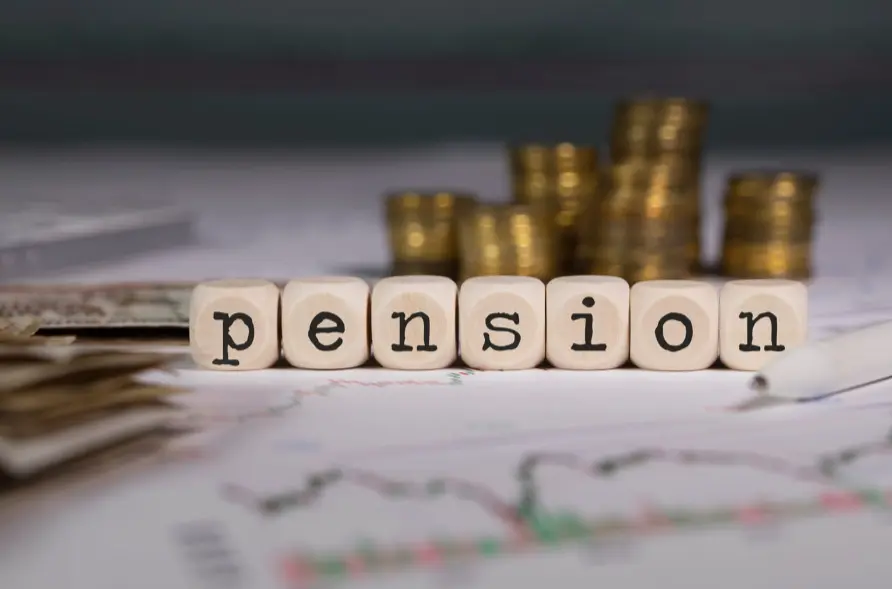Approved Retirement Funds (ARFs) offer Irish retirees flexible post-pension investment options, letting them manage and withdraw from their retirement savings while considering tax rules. This guide outlines taxation, withdrawal rates, minimum thresholds, and investment strategies to help ensure your ARF supports your financial goals throughout retirement.
APPROVED RETIREMENT FUNDS (ARF): WHAT ARE THEY?
An Approved Retirement Fund (ARF) is a financial product designed for individuals nearing or at retirement age. ARFs offer a flexible way for retirees to manage their pension funds after they receive their initial tax-free lump sum. Instead of locking up the remaining pension pot, you can invest it in an ARF, allowing you to draw down on your savings as and when you need.
Think of an ARF as a bridge between your working life and retirement, providing you with control over your financial future during your golden years. Whether you’re planning for long-term growth or ensuring steady income, understanding ARFs can empower you to make informed investment decisions.
HOW DO ARFS WORK?
When you decide to access your pension fund, what happens next can seem a bit overwhelming. Let’s break it down:
- First, you get to take a tax-free lump sum from your pension fund. This is typically 25% of the total value, up to a maximum of €200,000.
- The remaining 75% of the pension value can then be transferred into an Approved Retirement Fund (ARF).
- From this point on, any withdrawals from the ARF are taxed as income.
WHY CONSIDER AN ARF?
Many individuals approaching retirement may wonder why Approved Retirement Funds (ARFs) are worth considering. The answer lies in their flexibility. With an ARF, you have control over your funds and how they’re disbursed.
You can choose when and how much money to withdraw from your fund each year. This empowers you to manage your income stream according to your needs.
Additionally, with strategic ARF withdrawal planning, you could optimise your tax situation. By understanding the rules surrounding ARF withdrawals, it’s possible to minimise unnecessary taxes while maximising retirement income.
Investing in an ARF also allows for continued growth of your investments during retirement. Whether aiming for long-term security or seeking avenues for new opportunities within the market, this option provides versatility tailored to individual preferences.
WHEN IS AN ARF REQUIRED?
Understanding when an ARF is required can help you make informed decisions about your pension options.
Generally, an ARF comes into play under certain circumstances. For instance, if you’re retiring from an employer-sponsored pension scheme with a defined contribution (DC) arrangement, the remaining fund after taking your tax-free lump sum may need to be invested in an ARF.
If you’re transferring the taxable portion of an Additional Voluntary Contribution (AVC) fund from a defined benefit (DB) pension (typical of public sector pension schemes) an ARF may be required. The same applies if you’re taking a transfer value from a Defined Benefit (DB) pension scheme, or if you held private share purchase/RSUs with a company-specific pension plan.
Another scenario is if you have an overseas pension entitlement that allows you access through Irish-approved pensions. In this situation, transferring your funds into an ARF might be necessary for compliance and to ensure tax efficiency.
“You might also like our post on Retirement Planning Tips From A Leading Irish Pension Advisor.”
ARF WITHDRAWAL RULES
When it comes to withdrawing funds from an ARF, understanding the rules and taxation is crucial. The process involves a few key points that can impact your finances. First and foremost, withdrawals are taxable as income.
The amount you withdraw will be subject to income tax at your highest marginal rate. Additionally, PRSI (Pay Related Social Insurance) may apply as well—though this usually stops once you reach age 66.
Universal Social Charge (USC) also applies to these withdrawals under current Irish tax laws. It’s important to note that managing these taxes effectively requires careful planning.
“Have questions about ARFs? Enquire now for clarity and expert advice tailored to your financial goals.”
If you’re in a secure pension scheme or have specific allowances, strategising your ARF income can help minimise overall taxation—making every euro count towards a comfortable retirement.
Additionally, any PRSI paid based on ARF withdrawals will contribute to your Contributory State Pension entitlement for individuals up to age 66. From age 66 onwards, no PRSI is payable on ARF withdrawals.
“Ready to take control of your retirement planning? Book a consultation now with our experienced advisors.”
WHAT HAPPENS WHEN ARF FUND VALUE EXCEEDS €2 MILLION?
If the value of your ARF fund exceeds €2 million, it’s important to understand the additional implications. At this threshold, specific rules come into play that can impact your income.
One key detail is the imputed distribution requirement. Once the fund hits €2 million or more, Revenue mandates a higher withdrawal rate. This means you’ll need to take out at least 6% annually at age 61 instead of the previous 4% or 5%.
This change aims to ensure that funds are genuinely being used during retirement rather than accumulating excessively without taxation. It’s designed as a means to encourage proper use and distribution of pension savings.
For retirees with significant pensions investments, planning ahead becomes crucial when nearing this threshold. Understanding these rules can help you make informed decisions regarding your financial strategy moving forward.
COMPULSORY WITHDRAWALS FROM ARF – IMPUTED DISTRIBUTIONS
Understanding compulsory withdrawals, also known as imputed distributions, from your ARF is crucial. Once you reach the age of 61, you must withdraw a minimum amount annually. This rate starts at 4% and increases to 5% once you turn 71.
These rules are designed to ensure that funds within an ARF are gradually accessed over time rather than indefinitely deferred. It’s important because failing to meet these withdrawal requirements can lead to additional tax liabilities.
Staying informed about these thresholds helps maintain compliance while optimising your retirement income strategy.
TAX CONSIDERATIONS ON ARF WITHDRAWALS
When dealing with ARF withdrawals, understanding the tax implications is vital. Withdrawals from an Approved Retirement Fund are subject to PAYE taxation, meaning you’ll be taxed at your highest marginal rate. This can significantly impact your retirement income if not managed effectively.
If you’ve any excess tax initially deducted, there’s a silver lining—you may claim a rebate once your annual income figures are finalised. This is referred to as a ‘year-end review,’ which ensures you’re not overpaying taxes on your pension withdrawals.
You might also like our post on The Role Of Financial Advisors In Irish Retirement Planning.
It’s essential to keep this in mind while planning your withdrawals throughout the year. Whether you opt for monthly, annual, or ad-hoc withdrawals, maintaining an awareness of how these payments interact with revenue rules can help minimise unnecessary taxation.
ARF withdrawal rules state that minimum withdrawal thresholds must be met annually. Failure to do so could result in additional complications at year-end when the provider automatically processes what is known as the ‘imputed distribution.
When it comes to ARF (Approved Retirement Fund) withdrawals, understanding PAYE taxation is crucial. As pensioners draw down their funds, the Revenue requires these withdrawals to be taxed as income.
This means each withdrawal you make will have tax deducted at source by your ARF provider. It’s similar to how salaries are taxed during your working years. The rate applied depends on your total annual income and can vary based on other earnings or pension entitlements you may have.
Being aware of this system helps in planning cash flow better. Some choose monthly withdrawals while others opt for annual disbursements; either way, keeping an eye on potential taxes ensures that there are no surprises when assessing year-end finances.
Keep in mind that different thresholds exist based on individual circumstances and can affect the overall amount received after-taxation.
OPTIMISING ARF WITHDRAWALS TO MINIMISE TAX
Optimising ARF withdrawals to minimise tax is crucial for maximising your retirement income. The key lies in understanding the various thresholds and strategically planning your drawdowns.
At retirement, you can withdraw funds from your ARF monthly, annually, or on an ad-hoc basis. Staying informed about revenue rules helps avoid unnecessary taxation while keeping you compliant with mandatory withdrawal rates.
If you’re considering additional optional withdrawals beyond the compulsory imputed distributions, it’s essential to calculate their impact on your overall taxable income. This ensures that you don’t inadvertently push yourself into a higher tax bracket.
Effective planning can help you maintain a lower effective tax rate, ensuring more of your investment works for you throughout retirement. Being mindful of these factors allows retirees to enjoy their financial freedom without overpaying taxes.
CURRENT TAX-FREE INCOME THRESHOLDS (REVENUE RULES)
When it comes to ARF withdrawals, understanding the current tax-free income thresholds is essential. These thresholds determine how much you can withdraw without falling into a higher tax bracket.
For single individuals, up to €18,000 per year can be drawn from your pension fund and remain tax-free. This forms part of your overall annual income and must be considered alongside any other sources of revenue.
If you’re married or jointly assessed as a couple, this figure doubles to €36,000. It’s crucial to factor these limits into your withdrawal strategy to ensure you’re not paying unnecessary taxes on your pension savings.
Additionally, staying below these thresholds may help in managing Universal Social Charge (USC) liabilities effectively. Understanding these details helps pave the way for a more secure retirement journey with better financial control over your ARF investments.
HOW LONG WILL AN ARF LAST IN RETIREMENT?
The longevity of an Approved Retirement Fund (ARF) is a concern for many retirees. The answer depends on several factors.
Thinking about your retirement options? Enquire now and get personalised ARF guidance today.
First, consider your withdrawal rate. If you stick to the minimum required distribution, your ARF could last longer than anticipated. However, higher withdrawals can deplete funds more rapidly.
Need help navigating ARF withdrawals and tax implications? Book a consultation now for expert insights and strategies.
Next, think about investment returns. If your ARF continues to grow due to smart investments and market conditions, it may extend its lifespan significantly. On the flip side, poor performance could decrease available funds faster.
Inflation is another key factor that can erode purchasing power over time if not accounted for in your planning strategy.
Planning your withdrawal strategy and investment approach is crucial to ensure that your ARF supports you throughout retirement. A well-thought-out financial plan can help mitigate some of these risks and provide security you’ll need during those golden years.
WHAT HAPPENS TO AN ARF ON DEATH?
When an ARF holder passes away, the fate of their fund is a question many ponder. The full value of the ARF typically becomes part of the deceased’s estate. This means loved ones or designated beneficiaries can inherit it.
You might also like our post on Can You Still Claim A Previous Pension After Retirement In Ireland.
If the beneficiary is a spouse, the funds transfer tax-free. However, withdrawals made by the surviving spouse will be subject to income tax at their marginal rate when they access those funds.
For children under 21 years old, the inherited ARF forms part of their inheritance and could be subject to inheritance tax rates above certain thresholds.
WHO PROVIDES ARFs?
In Ireland, ARFs are offered by a range of providers. Understanding who provides these funds can help you make an informed choice when planning your retirement income.
Standard life-based pension providers such as Zurich, Royal London, Irish Life, New Ireland Assurance, and Aviva are among the key players in the market. Each has its own set of products tailored to suit different investor needs.
For those seeking more control over their investments, specialists like ITC (Independent Trustee Company), Quest, Cantor Fitzgerald, and Davy offer self-administered ARFs. These options provide flexibility in asset selection and management strategies.
With a variety of providers available, it’s essential to compare fees, investment choices, performance histories, and customer service levels. Carefully reviewing these factors will ensure you choose an ARF provider that aligns with your long-term financial goals.
ARF INVESTMENT OPTIONS
When it comes to ARF (Approved Retirement Fund) investment options, the choices can be quite diverse. Investors have the flexibility to tailor their portfolios according to risk tolerance and long-term goals.
One popular option is investing in cash on deposit. This approach offers lower risk but may not yield significant returns compared to other asset classes.
Alternatively, some opt for a mix of assets such as shares, property, or commodities. This diversification can help mitigate risks while providing opportunities for growth.
For those seeking capital protection, there are options within ARFs that focus on preserving the principal investment. These strategies might appeal particularly to retirees who prioritise security over high returns.
Additionally, many investors choose funds managed by professional advisors who continuously adjust portfolios based on market trends.
HOW TO CHOOSE THE RIGHT ARF PROVIDER
Choosing the right ARF provider is a crucial step in your retirement planning. With multiple options available, it’s essential to consider factors that align with your financial goals.
First, compare fees and charges. Each provider has different fee structures that can impact your long-term returns. Understanding these costs upfront helps you avoid unexpected expenses later on.
Next, assess investment options offered by various providers. Some may offer a wide range of funds or bespoke solutions tailored to your risk appetite. This flexibility can be especially beneficial for those seeking diversification.
Consider the track record of each provider as well. Reliable performance history often translates to greater peace of mind during uncertain times.
Lastly, customer service plays an important role in your overall experience with an ARF provider. Choose one known for responsive support and transparent communication so you always feel informed about your investments.”
CONCLUSION
As you stand at the threshold of retirement, understanding how ARFs operate can profoundly impact your financial strategy. These funds offer flexibility in accessing pension savings, catering directly to individual needs and circumstances. The withdrawal options and associated tax implications get to the core of planning for a sustainable income stream.
Choosing an ARF provider is equally crucial. With various investment avenues available, it’s essential to align these choices with personal goals and risk appetite. The longevity of your ARF hinges on prudent management—balancing withdrawals against potential growth ensures that your nest egg endures through your retirement years.
Planning retirement income draws attention to what happens when the value exceeds €2 million or upon death—details worth understanding thoroughly. Cashing in pensions may seem intimidating initially; however, clear insights into current thresholds and efficient strategies can simplify this process considerably.
As you embark on this journey towards financial security in retirement, keep in mind these key factors: planning your ARF withdrawals, understanding your income tax implications, choosing the right ARF provider, and considering how long your ARF will last. Money Maximising Advisors can help guide you through the complexities of ARFs, ensuring your retirement income is tailored to your needs. Take control of your future and secure a comfortable retirement by exploring your ARF options today. Contact Us today for personalised guidance on securing your best retirement!




